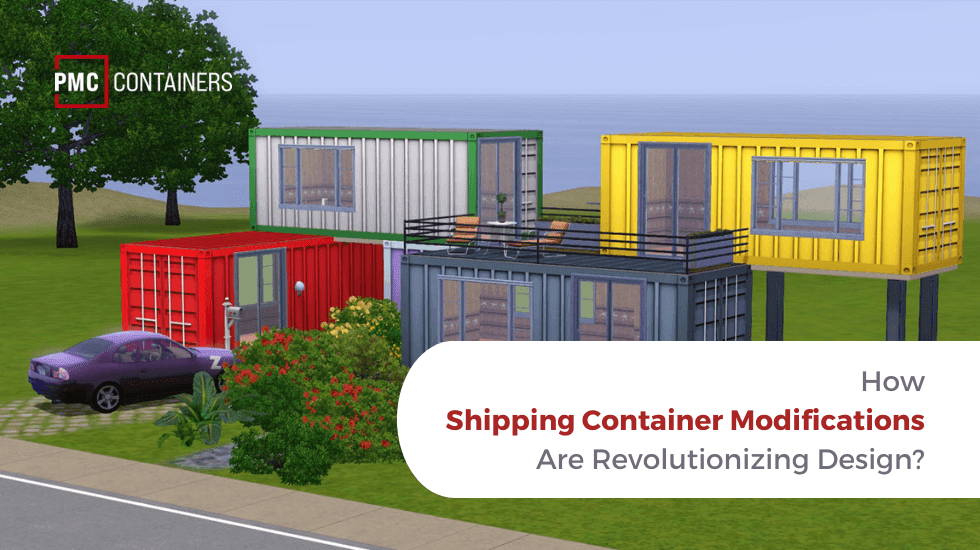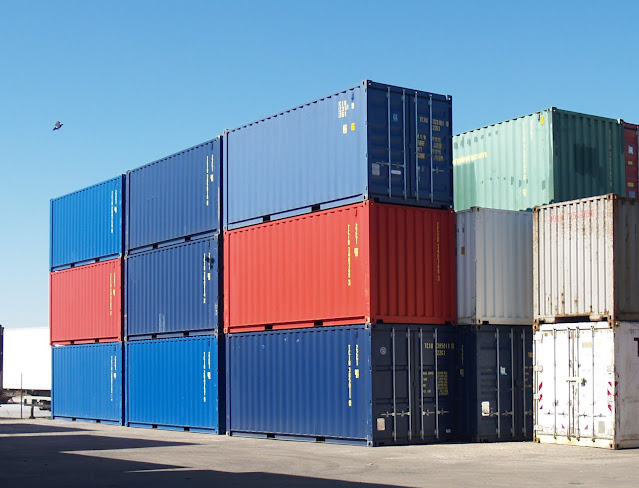The Ultimate Guide to Shipping Container Modifications and Design
Welcome readers to this comprehensive guide on shipping container modifications and design. Whether you're looking to repurpose a shipping container for residential, commercial, or industrial use, this guide will provide you with all the information you need to get started. Shipping container modifications in Melbourne have gained popularity in recent years due to their durability, versatility, and cost-effectiveness.
By repurposing shipping containers, you not only contribute to sustainability but also have the opportunity to create unique and functional spaces. Let's dive into the world of shipping container modifications and design!

I. Getting Started with Shipping Container Modifications
A. Understanding the Basics
Shipping containers are large steel boxes used for transporting goods across the globe. They typically come in two standard sizes: 20 feet and 40 feet in length, with a width of 8 feet and a height of 8.5 feet. These containers are designed to withstand harsh conditions at sea and are built to be stackable and easily transported. Their robust construction makes them an excellent base for modifications and repurposing.
B. Assessing Your Needs and Goals
Before diving into container modifications, it's important to assess your specific requirements and goals. Consider the purpose of your project – whether you plan to create a residential home, office space, restaurant, or any other type of structure. Understanding your needs will help guide your decision-making process throughout the modification journey.
II. Choosing the Right Shipping Container
A. Selecting Containers Based on Size and Condition
When it comes to choosing a shipping container, size matters. The most common sizes are 20 feet and 40 feet, but there are also smaller and larger options available. Carefully consider your space requirements and limitations before deciding on a container size. Additionally, decide whether you want to purchase new or used containers. New containers are generally in better condition, while used containers may require more inspection and maintenance.
B. Evaluating Structural Integrity and Quality Standards
Structural integrity is crucial when choosing a shipping container for modifications. Inspect the container thoroughly for any signs of damage, such as dents, rust, or holes. Check the floors, walls, and roof for any structural issues. It's also important to consider quality standards and certifications to ensure safety and compliance with local regulations.
III. Essential Considerations for Container Modifications
A. Planning Your Layout and Design
Designing functional spaces within the limited dimensions of a shipping container requires careful planning. Make a list of the essential features you want to include, such as bedrooms, bathrooms, kitchens, or workspaces. Consider insulation, ventilation, plumbing, and electrical requirements for your specific project. Space optimization is key, so explore creative solutions to make the most of the container's interior.
B. Exploring Popular Modification Options
There are numerous modification options available to transform a shipping container into your desired space. Common modifications include adding doors, windows, partitions, or skylights to enhance natural light and airflow. Additionally, you can customize the flooring, cladding, or painting to create a unique aesthetic. The possibilities are endless, so let your creativity shine!
IV. Hiring Professionals or DIY Approach?
A. Weighing Pros and Cons
Deciding whether to hire professionals or take a DIY approach depends on the complexity of your modification project and your budget. Hiring professionals is beneficial for complex projects that require expertise in structural modifications, electrical systems, or plumbing. They can ensure that your project meets safety standards and local regulations. On the other hand, a DIY approach can be suitable for simpler modifications and those with budget constraints. It allows you to have more control over the project and saves money on labor costs.
B. Finding Reliable Contractors/Suppliers
If you decide to hire professionals for your shipping container modifications in Melbourne, it's crucial to find reliable contractors and suppliers. Research local contractors with experience in container modifications and read reviews from previous clients. Online resources, directories, or recommendations from friends can help you find trustworthy professionals. Similarly, find reputable suppliers that provide high-quality materials for your project.
V. Budgeting and Legal Considerations
A. Estimating Costs and Expenses
When budgeting for shipping container modifications, consider various expenses such as purchasing the container, transportation costs, modifications, permits, and utility connections. Create a detailed breakdown of costs to help you stay within your budget. Look for cost-saving strategies, such as using reclaimed materials or repurposing existing fixtures and furniture.
B. Navigating Permits and Regulations
Before starting any modifications, it's essential to obtain the necessary permits and comply with local regulations. Different areas have specific rules regarding structural modifications, zoning, and electrical and plumbing systems. Research local building codes and consult with professionals or local authorities to ensure you meet all requirements.
Conclusion:
In this ultimate guide to shipping container modifications and design, we have covered the basics of getting started, choosing the right container, essential considerations for modifications, hiring professionals versus a DIY approach, and budgeting and legal considerations. By repurposing shipping containers, you can create unique, sustainable, and cost-effective spaces for residential, commercial, or industrial use.
With careful planning, creativity, and the right professionals by your side, the possibilities are endless. Embrace the world of shipping container modifications in Melbourne confidently and make your vision a reality!
Source From: The Ultimate Guide to Shipping Container Modifications and Design


Comments
Post a Comment